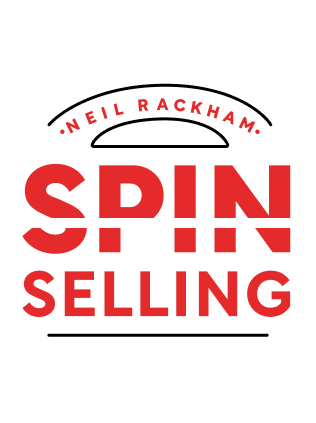

This article is an excerpt from the Shortform summary of "Spin Selling" by Neil Rackham. Shortform has the world's best summaries of books you should be reading.
Like this article? Sign up for a free trial here .
What is the SPIN selling technique, and how can you master it? What rules do you need to know?
The SPIN selling technique focuses on asking the right question. Once you learn the basics of the SPIN selling technique, you’ll have to keep in mind some key tips and rules to help you succeed. Learn the 8 steps (4 rules, and 4 practice steps).
Implementing the SPIN Technique
A successful SPIN selling technique requires a commitment to diligently practice the skills. This chapter is not only about what skills to practice, but also how to practice.
Four Practice Rules
Everyone has the ability to learn new skills by following four principles. The SPIN selling technique can be achieved by following them and practicing them.
Rule 1: Practice One New Behavior at a Time
People who are seeking to improve their skills often try to change too much at one time. For instance, after reading this book, you might resolve to eliminate closing techniques, ask more problem questions, ask implication questions instead of jumping into offering solutions, avoid presenting too many features, and so on.
But to learn difficult new skills, you need to practice one new behavior at a time, not a half-dozen. So choose one new behavior from the book, and keep practicing it until you’re comfortable with it.
Rule 2: Try a New Behavior at Least Three Times
Expect new behaviors to be awkward when you first try to implement them. For instance, if you’re trying to learn to ask implication questions, they’re going to sound contrived when you first start asking them. You might even be tempted to give up and try another new skill. But you have to “break in” a new behavior like a pair of shoes—wear it or practice it multiple times until it’s comfortable. Practice a new behavior at least three times before moving on to something else.
Rule 3: Quantity before Quality
Foreign language used to be taught in a way that put quality first. Students were taught multiple things at once—words, pronunciation, tense, word order—and had to get everything right, for instance in reciting a sentence for the teacher. The focus was on crafting a perfect sentence.
Today, language training focuses on quantity as opposed to quality—instead of worrying about getting every detail right, students are urged to use many words and speak the language as much as possible. This has proven to be a faster, more effective way of becoming fluent.
Similarly, researchers found that the quickest way to learn a new selling skill is by focusing on quantity—don’t worry about asking perfectly framed problem or implication questions: just ask these types of questions a lot, and you’ll soon get the hang of it. Practice as much as you can—and you’ll implement new ideas more quickly while your quality improves over time.
Rule 4: Practice in Safe Situations
Don’t start practicing new skills in high-stakes situations—for instance, with major-account clients. They’re going to be awkward at first, and the customer may react negatively. Instead, practice new behaviors in low-risk or safe situations—for instance, with customers you know well, or on calls where you have little to lose if you fall flat.
The best sequence for learning a new sales skill is:
- Pick one new sales skill to work on.
- Choose a low-risk call in which to practice it.
- Focus on using the skill a lot versus performing it perfectly.
- Try the skill at least three times before moving on.
Four Steps for Implementing a SPIN Selling Technique
Here are four steps for translating the SPIN selling technique and ideas into practice:
1) Focus Your Planning on the Investigating Stage
When sales reps plan calls, they tend to focus on what they will tell the customer about the product (the demonstrating value phase), instead of the questions they should ask. But it’s critical to first develop the customer’s needs by asking questions, so that she wants the value your product can deliver. Investigating is the most important selling skill.
2) Develop and Practice Questions in the SPIN Sequence
Start with the easier situation and problem questions first. When you have a handle on them, move on to the more difficult types of questions.
- Determine whether you’re asking enough questions to begin with. If you’re spending most of the call talking about features, scale back and start asking situation questions instead. Do this until asking questions feels as natural as talking about features.
- Plan and ask problem questions. Plan and ask at least a half-dozen problem questions on each call (focus on quantity, not quality).
- Plan and practice implication questions. Once you’ve mastered the skill of uncovering problems, start planning and asking implication questions. This may require a few months’ practice.
- Plan and ask need-payoff questions: Rather than presenting benefits, focus on asking questions that get the customer to tell you how your solution will benefit him—for instance, ask, “What do you see as the pluses of this?”, and “How would that help?”
3) Think of Your Product as a Problem-Solver
Rather than focusing on your product or service’s features and advantages, think of the ways it solves customer problems. Write down the problems the product is intended to solve, then use the list to plan your SPIN questions.
4) Plan, Implement, and Review the SPIN Selling Technique
Planning your sales call and acting on your plan help to embed new skills in your mind. But you learn even better by reviewing and analyzing your calls afterward to see what you can do better the next time.
Some helpful questions to ask yourself about the SPIN selling technique are:
- Did I accomplish what I intended to in the call?
- What would I do differently if I could do the call over?
- What have I learned that I can use to improve future calls with this customer?
- What have I learned that I can use in all of my calls?
Don’t settle for just forming an overall impression of how a call went. Delve into the details—for instance, consider which questions had the greatest effect. Only understanding the details will help you improve your future performance.
The SPIN selling technique is useful for all types of sales. You can apply the above strategies and rules to the SPIN selling technique, and watch your sales flourish.

———End of Preview———
Like what you just read? Read the rest of the world's best summary of Neil Rackham's "Spin Selling" at Shortform .
Here's what you'll find in our full Spin Selling summary :
- What the SPIN in SPIN Selling stands for
- How to demonstrate real value to the person you're selling to
- How to get commitment from your customer to close the sale fast






